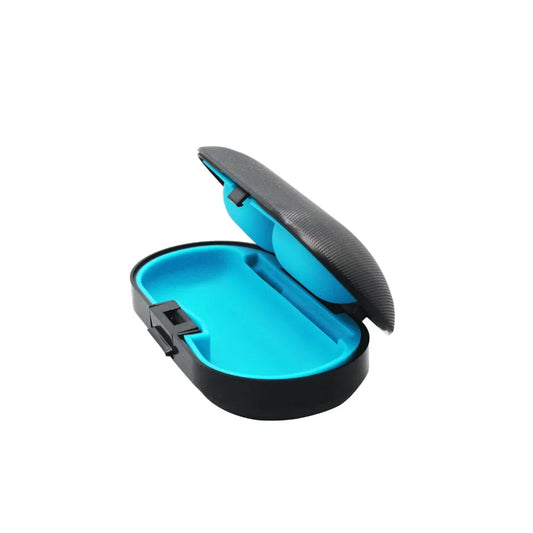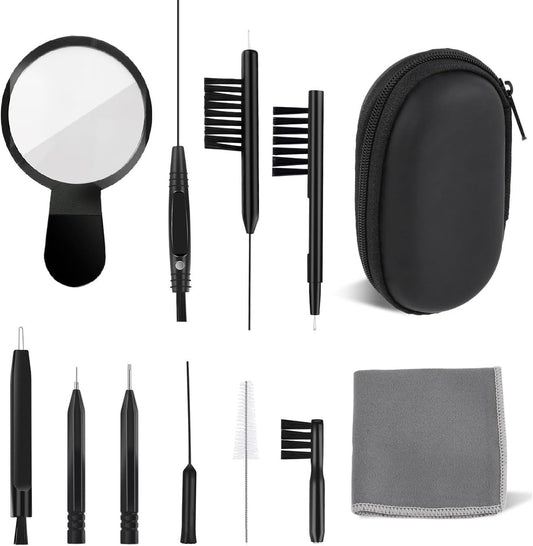Ear Wax Removal (2025 Guide): Safe, Certified, and Effective Options That Work
Share

Earwax — or cerumen — is a natural substance your body produces to keep ears clean and healthy. It traps dust, repels bacteria, and gently works its way out on its own.
But sometimes, the system stalls. Especially for people who wear hearing aids or earplugs, wax can accumulate faster than it can clear. The result? Blocked ears, muffled hearing, discomfort — and expensive trips to private clinics.
That’s why ear wax removal has become such a common search in the UK — as NHS ear care services decline, more people are looking for safe, certified ways to manage ear health at home.
In this guide, we’ll explain everything you need to know about safe ear wax removal — what causes buildup, what to avoid, and how modern medical-grade devices like Lavège let you achieve clinic-quality care at home, risk-free.
What Causes Ear Wax Build-Up?
Earwax is your body’s natural defence mechanism — but several factors can make it overproduce or compact:
- Wearing hearing aids or earplugs regularly (blocks natural wax movement).
- Narrow ear canals or excess hair growth.
- Dry skin or eczema in the ear canal.
- Overuse of cotton buds.
- Age-related changes — older adults often produce drier, harder wax.
➡️ Did you know? Around 1 in 10 UK adults — and 1 in 3 over 65 — experience problematic earwax buildup.
When this happens, sound becomes muffled, hearing aids whistle, and ears feel “full” or uncomfortable.
💡 Laväge was designed specifically for hearing aid users and older adults who experience recurrent wax buildup.
Signs You May Need Ear Wax Removal
- Muffled or distorted hearing
- Itching or fullness in the ear
- Earache or dizines
- Whistling or feedback from hearing aids
- A blocked "underwater" sensation
Rule of thumb: if you catch yourself saying “What?” more often than usual — your ears might just need a proper cleaning.
Unsafe Ear Wax Removal Methods to Avoid
When ears feel blocked, it’s tempting to reach for quick fixes. Unfortunately, many popular methods are unsafe — and can cause more harm than good.
🚫 Cotton buds (Q-tips):
Push wax deeper, risking compaction and eardrum injury.
🚫 Ear candles:
Not medically approved. Can cause burns, wax drips, and blockages.
🚫 Sharp objects (pins, hair clips, keys):
Dangerous. May scratch the ear canal and lead to infection.
🚫 DIY syringes or shower jets:
Uncontrolled pressure can rupture the eardrum.
NHS guidance: Avoid these entirely. Use only certified devices or professional care.
Safe, Specialist-Approved Ear Wax Removal Methods
1. Microsuction (Clinic Method)
A trained clinician uses a microscope and gentle suction to remove wax.
✅ Fast and effective.
💷 Typically £70–£100 per ear.
⚠️ Not suitable for everyone (some find it uncomfortable).
2. Electronic Irrigation (Clinic & Home Use)
Uses controlled warm water to flush out softened wax.
Safe, gentle, and commonly used in audiology clinics.
Modern systems — including Laväge’s Earvo System™ — replicate this exact process, but with CE- and UKCA-certified pressure control for safe at-home use.
3. Softening Drops
Before irrigation, softening drops help loosen wax naturally.
Common ingredients include olive oil, carbamide peroxide, or Lavège’s organic tea tree blend.
Ear Wax Removal at Home — What You Need to Know
At-home removal can be safe and effective when using certified systems and proper technique.
The Key Is Gentle Control
High-pressure gadgets can damage ears — which is why Laväge’s Earvo System™ features four pressure modes: Weak, Medium, Pulse, and Strong.
Even on “Weak,” users report full relief without discomfort.
Designed for Safety
- CE / UKCA certified medical device
- Built-in pressure limiter
- Medical-grade softening drops included
- Ergonomic, clinical grade irrigator design
🩺 The same safe method used by professionals — now available for home use.
Clinic vs. At-Home Ear Wax Removal
| Factor | Clinic Visit | Laväge at Home |
|---|---|---|
| Cost | £70–£120 per session | One-time £135–£225 |
| Safety | Trained professional | CE / UKCA certified device |
| Convenience | Appointment required | Anytime at home |
| Independence | Dependent on clinic visits | Do it yourself safely |
| Guarantee | None | Instant Relief Guarantee™ |
💬 Clinic-level results — without the clinic visit.
What If Laväge Doesn’t Work?
For the small percentage of users with unusually compacted wax, Laväge offers the Instant Relief Guarantee™.
If your kit doesn’t bring the clarity you expected, and a licensed clinic successfully clears your blockage — Laväge covers your clinic visit in full.
It’s that simple.
“We trust our customers first — because we know our system works.”
Learn more about the Instant Relief Guarantee
Preventing Ear Wax Build-Up Long Term
Ear care shouldn’t stop after a blockage is cleared.
Preventing wax buildup keeps your hearing aids performing — and your ears comfortable.
Long-Term Care Tips
- Use softening drops weekly to keep wax manageable.
- Perform a gentle rinse every few weeks.
- Keep hearing aids clean and moisture-free.
- Replace wax guards regularly.
- Avoid inserting objects into the ear canal.
💧 Consistent care prevents 90% of wax-related hearing aid failures.
When to See a Professional
Even with the best at-home care, some situations require expert attention:
- Pain, discharge, or sudden hearing loss.
- History of ear surgery or perforation.
- Persistent blockage after using Laväge.
When in doubt, consult a certified audiologist or ENT specialist.
Laväge supports — not replaces — professional care.
Conclusion: Safe Ear Wax Removal Is About Confidence, Not Risk
Earwax is natural — but buildup doesn’t have to be part of your life.
With Laväge, you can achieve clinic-quality results at home, safely and confidently.
CE and UKCA certified. Designed for hearing aid users. Backed by the Instant Relief Guarantee™ —
Either you get relief at home, or we cover your clinic visit.
Ready to protect your hearing aids and enjoy clearer hearing again?
👉 Shop Laväge Kits →




